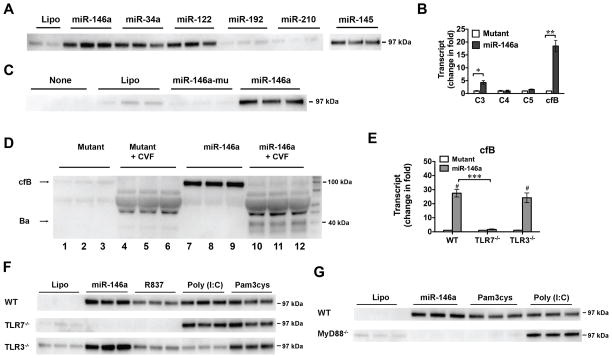Fig. 5. miRNA-induced cfB production is via TLR7-MyD88 signaling in the macrophage.
A. miRNA mimics induce cfB production. Macrophages were treated with 50 nM of miRNAs for 18 hours and media were analyzed for cfB expression. B. Effect of miR-146a on complement gene expression in macrophages. miR-146a mimic or miR-146a mutant (50 nM) was incubated with WT macrophages. Six hours later, C3, C4, C5 and cfB mRNAs were measured using qRT-PCR. * P < 0.05, ** P < 0.01. n=3 in each group. The experiment was repeated twice. C. Effect of miR-146a and its U→A mutant on cfB protein production in the medium. D. AP activity assay. Macrophages were incubated in serum-free (complement-free) medium and treated with 50 nM of miR-146a mutant (lane 1–6) or miR-146a (lane 7–12) for 24 hours. At the end of treatment, media were collected and incubated in the absence (lane 1–3, 7–9) or presence (lane 4–6, 10–12) of 2.5% cfB−/− mouse serum, 11 μg/ml cobra venom factor (CVF) and 5 mM MgCl2 at 37°C for 1 hour, and analyzed for cfB and Ba fragment by Western blot. The experiment was repeated twice. E. Impact of TLR7 and TLR3 deletion on miR-146a-induced cfB gene expression. WT, TLR3−/− and TLR7−/− macrophages were treated with miR-146a (50 nM) or its mutant for 6 hours. cfB mRNA was quantified by qRT-PCR. # P < 0.001 vs. the corresponding mutant control in each strain. *** P < 0.001, n=3 in each group. The experiment was repeated twice. F. Impact of TLR7 and TLR3 deletion on miR-146a-induced cfB protein production. Macrophages from WT, TLR3−/−, TLR7−/− mice were treated with lipofectamine, miR-146a (50 nM), R837 (0.25 μg/ml), poly (I:C) (10 μg/ml), or pam3cys (1 μg/ml) for 18 hours. Media were collected for cfB analysis. The experiment was repeated twice. G. Effect of MyD88 deletion on miR-146a-induced cfB protein production. Cells were treated with lipofectamine, miR-146a, pam3cys, or poly (I:C) for 18 hours and the culture media were tested for cfB expression. The experiment was repeated twice. Lipo=lipofectamine.

